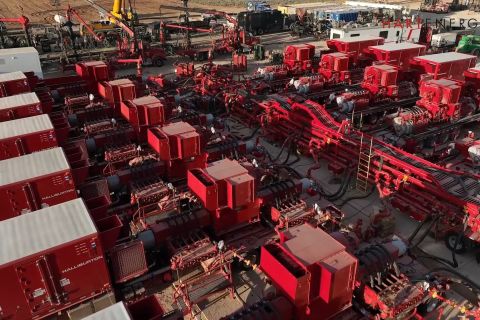Presented by:

Editor's note: This column appears in the new E&P newsletter. Subscribe to the E&P newsletter here.
We are living amid the world’s latest—and perhaps most important—energy transition. In the past, we could point to market forces and the availability of certain fuels as the basis for emphasis on one energy source versus another. Today’s transition adds societal pressures, mountains of data and competing analyses in the mission to reduce greenhouse-gas emissions.
The energy industry is not a monolith. It’s a complex matrix of producers, sources, service and product suppliers, merchants and others that all have a role to play in each iteration of an energy transition. Energy consumers are familiar with the logos and taglines of the largest energy producers, but they may not be as familiar with oilfield service (OFS) companies developing and employing technologies that are contributing to energy decarbonization.
Years ago, the prediction was the coming end of the oil and gas era. This may have been true if it weren’t for advanced techniques such as horizontal drilling and hydraulic fracturing being safely introduced to the industry. These technologies enabled more efficient and safe capture of resources in the field. OFS companies continue their technology development with a keen eye toward even more responsible development. The world wants reliable, affordable and clean energy. We can’t achieve this by excluding energy sources from the energy mix.
To get to reliable, affordable and clean energy, the industry, policymakers and the investment community need to come together in support of achievable and “stretch” goals, predictable legislation and regulation, and a clear understanding that arbitrary dates do not speed up technological advances.
We urge policymakers to think big but support solid public policy to help the world reach these goals:
- Acknowledge that energy transition is about choices and not picking winners and losers. The energy mix needs to include options for each country to improve its current energy condition. There is not a silver bullet that can get us to our goals. We need many solutions to address challenges created by different conditions and resources available in regions around the world.
- Support the technological revolution. In every area of energy production, companies are inventing and innovating. Organizations once known for their work in the oil field are adding to their portfolios with breakthroughs in hydrogen, geothermal, wind as well as carbon capture and storage.
- Reflect the reality that all energy sources have environmental impacts and technological challenges.
Energy access and the associated energy mix are not partisan issues. They are societal challenges being addressed from multiple angles. The OFS sector is at the forefront of driving the world’s evolving energy wants and needs. With smart and realistic public policy that balances economic development and a charge to combat climate change, we can set a course that delivers the reliable, affordable and resilient energy supply we all demand.
As we work toward our shared energy goals, let’s not forget about the progress we’ve made, the technology we’re currently employing and the incredible scientific strides the industry is developing.
RELATED CONTENT:
Check out Hart Energy's "Energy Policy Watch" series.
Recommended Reading
CERAWeek: Large Language Models Fuel Industry-wide Productivity
2024-03-21 - AI experts promote the generative advantage of using AI to handle busywork while people focus on innovations.
Cyber-informed Engineering Can Fortify OT Security
2024-03-12 - Ransomware is still a top threat in cybersecurity even as hacktivist attacks trend up, and the oil and gas sector must address both to maintain operational security.
Exclusive: Halliburton’s Frac Automation Roadmap
2024-03-06 - In this Hart Energy Exclusive, Halliburton’s William Ruhle describes the challenges and future of automating frac jobs.
Oil States’ ACTIVEHub for Digitized Assets
2024-03-14 - Oil States Energy Services’ new ACTIVEHub system and ACTIVELatch help operators remotely monitor and automate frac locations for a more efficient and safer wellsite.




